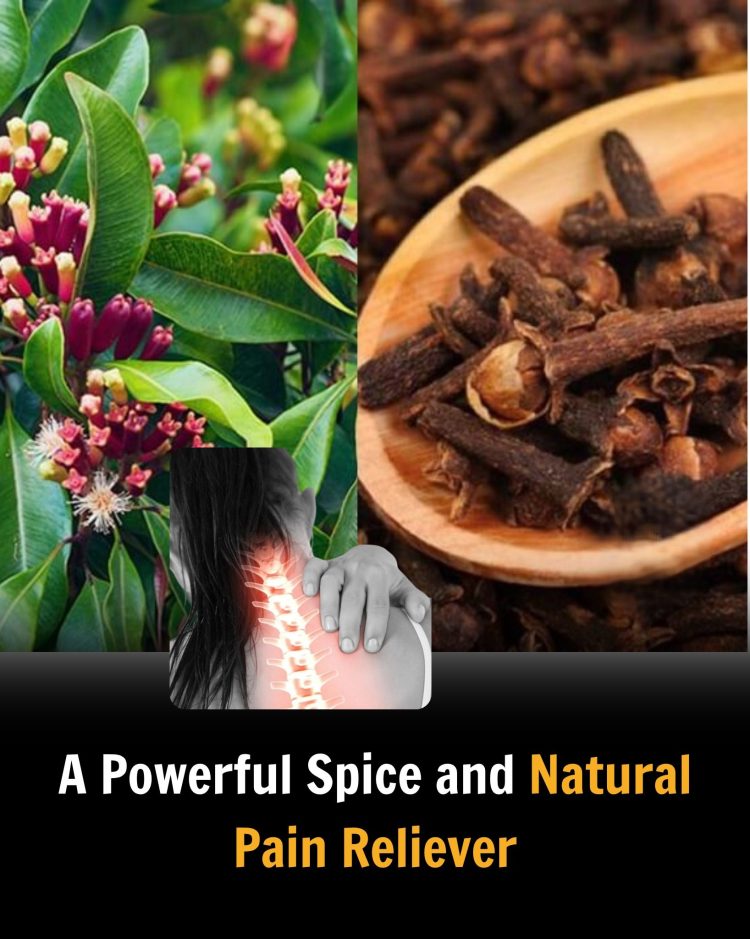With its warm, distinctive aroma and versatile applications in both culinary and medicinal fields, clove (Syzygium aromaticum) has long been recognized as a valuable spice and herbal remedy. This article explores the many health benefits of clove, how to use it effectively, and essential precautions to ensure safe usage—especially for pain relief.
What Is Clove?
Vietnamese name: Đinh hương
Scientific name: Syzygium aromaticum
Family: Myrtaceae (Myrtle family)
Other names: Đinh tử hương, công đinh hương, chi giải hương
Originally native to the Maluku Islands of Indonesia, clove is now cultivated in many tropical regions around the world, including Vietnam. Its dried flower buds, shaped like small nails, contain high concentrations of essential oils—particularly eugenol, caryophyllene, and antioxidants—making it a powerful anti-inflammatory and analgesic.
Botanical Characteristics
Clove trees can grow up to 12–15 meters tall. The leaves are opposite, oval, and pointed. Clusters of small, bright red flowers bloom at the tips of branches, each consisting of four petals that fall off early, leaving numerous stamens. The tree bears elongated, fleshy fruit with only one seed.
Although clove trees thrive in hot, humid climates below 200–300m elevation, they don’t reach peak productivity until around 20 years old. Harvesting typically occurs once or twice a year when the buds begin turning red. Buds are handpicked before flowering to preserve quality—roughly 10,000 buds make up 1 kilogram of cloves.
Top producers today include Zanzibar and Pemba (East Africa), Madagascar, Brazil, Malaysia, and Sumatra. While Vietnam used to import all its clove supply, there have been limited, though not widespread, attempts at domestic cultivation.
Chemical Composition
Each clove bud contains:
10–12% water
5–6% minerals
6–10% lipids
13% tannins
Rich in carbohydrates
The essential oil content of clove is among the highest in medicinal plants—up to 15–20%. The oil is heavier than water and mainly composed of:
Eugenol (80–85%) – main active compound with anesthetic and anti-inflammatory effects
Acetyleugenol (2–3%)
Caryophyllene (a sesquiterpene)
Methyl amyl ketone and other esters – contribute to its distinct aroma
Health Benefits of Clove
Clove offers a range of therapeutic effects, especially as a natural analgesic:
Toothache and gum pain relief: Eugenol acts as a topical anesthetic and anti-inflammatory agent.
Muscle and joint pain: Clove can soothe sore muscles and reduce joint pain, especially in arthritis.
Antibacterial and anti-inflammatory: Clove helps fight infections and reduce inflammation.
Antioxidant protection: High levels of antioxidants protect cells from damage and aging.
How to Use Clove Effectively
Clove tea: Steep 1–2 buds in hot water for 10 minutes. Drink daily to aid digestion and relieve pain.
Clove essential oil: Apply topically to sore areas to ease muscle and joint discomfort.
Spice blends: Combine with cinnamon, ginger, or pepper for enhanced pain relief and immune support.
see continuation on next page
